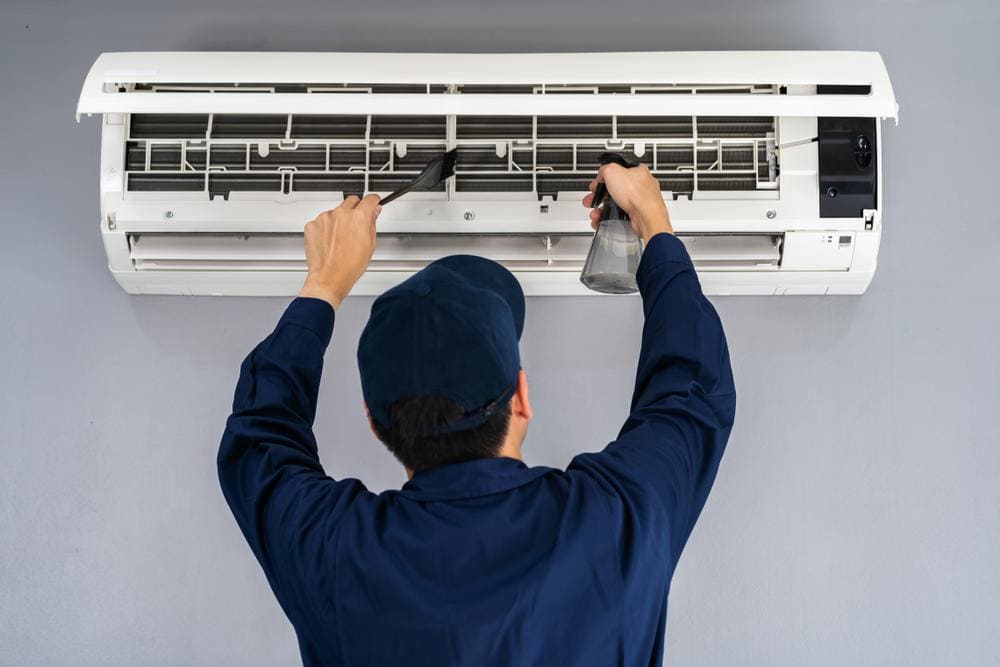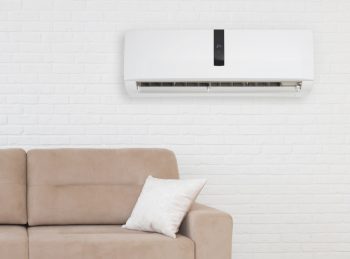
An AC drain line, also known as a condensate drain line, is an integral part of your air conditioning system. It’s responsible for removing the excess moisture generated during the cooling process, thus maintaining a comfortable indoor environment and preventing potential damage to your HVAC system. But what does an AC drain line look like, and how does it function? Let’s dive deeper into the subject.
An AC drain line, also known as a condensate drain line, is usually a small pipe made from PVC or metal that runs from your indoor AC unit to the outside of your home. It’s typically attached to the bottom of your indoor evaporator coil unit’s drain pan. The outdoor segment is often a 3/4-inch PVC pipe with an open end near the air conditioner’s outdoor condenser unit. The indoor portion connects to the drain pan on the bottom of the indoor evaporator coil unit.
Identifying AC Drain Line
An AC drain line is typically made from PVC pipe or metal. It runs from your indoor AC unit to the outside of your home. Its function is to transport water and debris from the drain pan to a drain or outdoors. The AC drain line is usually a small pipe attached to the bottom of your indoor evaporator coil unit’s drain pan.
The outdoor segment of the drain line is often a 3/4-inch PVC pipe with an open end that allows water to drain out. You may notice this end near the air conditioner’s outdoor condenser unit. The indoor portion of the drain line connects to the drain pan on the bottom of the indoor evaporator coil unit.
Location of AC Drain Line
The AC drain line is located near the indoor and outdoor units of your air conditioning system. The outdoor part usually appears as a copper or white PVC pipe, while the indoor part is a vertical PVC pipe with a cap, acting as the access point for the condensate drain.
Variations in AC Drain Line
There are variations in AC drain lines across different AC models. The differences lie in the materials used, the size of the drain lines, and the layout of the drainage system. Most AC drain lines are made of PVC or copper pipes. The size of the drain lines can vary, but a common size is 3/4-inch.
Common Problems with AC Drain Line
Several problems can occur with an AC drain line, including:
- Clogs: Debris such as leaves, dust particles, and mold can accumulate in the drain line, leading to blockages.
- Mold growth: The damp environment in the drain line can promote mold growth, negatively impacting indoor air quality.
- Drain trap issues: The U-shaped trap in the condensate drain can become blocked or dry out, causing sewer odors and gases to back up into your home.
- Leakage and flooding: If the drain line becomes obstructed, the condensate pan can overflow, causing water damage.
Maintaining an AC Drain Line
To maintain an AC drain line, it’s recommended to flush the line every one to three months. This can be done using a mixture of white vinegar and water or just vinegar. The vinegar helps kill mold, algae, and other bacteria, preventing buildup and clogs.
Risks of Neglecting AC Drain Line Maintenance
Neglecting maintenance of the AC drain line can lead to a variety of problems, including property damage, mold and bacterial growth, lower indoor air quality, damage to the air conditioner, ineffective cooling performance, and higher energy costs.
In conclusion, the AC drain line is a vital component of your air conditioning system that requires regular maintenance. By understanding what an AC drain line looks like and how it functions, you can better maintain your AC system and prevent potential problems.
Frequently Asked Questions
What is the role of the AC drain pan in the air conditioning system?
The AC drain pan, also known as the condensate pan, collects the moisture that forms on the evaporator coil during the cooling process. The collected moisture then drains into the AC drain line, preventing water damage to the air conditioner and your home.
How often should I clean my AC drain line?
It’s recommended to clean your AC drain line every one to three months. Regular cleaning can help prevent clogs and other issues that could lead to water damage or affect the performance of your air conditioning system.
What are the signs of a clogged AC drain line?
Signs of a clogged AC drain line may include water pooling around the indoor AC unit, a musty or moldy smell in your home, a higher than usual humidity level, and a decrease in the performance of your air conditioner.
What should I do if my AC drain line is clogged?
If your AC drain line is clogged, you can try unclogging it yourself using a wet/dry vacuum or a special AC drain line cleaning solution. If the clog persists, you should contact a professional HVAC technician to avoid potential damage to your air conditioning system.
Can I use bleach to clean the AC drain line?
While bleach can be effective in killing mold and bacteria, it’s generally not recommended for cleaning AC drain lines as it can corrode and damage the pipes, especially if they are made of PVC. A safer alternative is white vinegar, which is also effective in preventing mold and algae growth.












